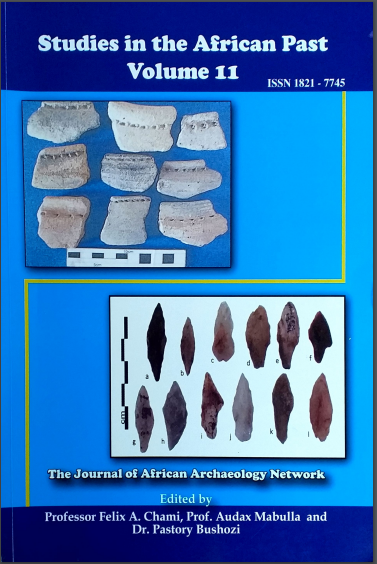Investigation of Brain Lobes Changes and Spatial Re- organisation during Hominin Evolution
Abstract
Brain size and its increase relative to body size has been closely linked to technological advancement in the course of human evolution. Studies carried out on sensor-motor and temporal lobes of museum quality endocasts including modern human brains show a progressive increase in lateral aspects of these brain areas in early hominins through to later ones. Re-organisation and evolution of these areas charged with memory and cognitive functions of the hominin brain from australopithecines to members of genus Homo were probably very crucial in adjusting and responding to environmental changes.
This paper presents results from a study carried out through quantifying sensori-motor and temporal lobe areas of brain to see how these areas have changed/been re-organised through time. Such parameters were then used to explain the evolution of hominin brains from Pliocene, Pleistocene to the present.
The main objective of the study was to investigate brain lobe changes and spatial re-organisation during hominin evolution by measuring the brain ' s sensori-motor and temporal lobe areas so as to establish a re-organisation pattern that control muscle movements ' co-ordination as well as memory and cognition in hominins, particularly among members of genus Homo. Specifically, the study sought to establish whether the brain of the envisaged first toolmaker and user (Homo habilis) is significantly different from those of later Homo and Paranthropus and Australopithecus genera. That was considered a new approach towards gathering and accumulating information on how such areas have re-organised in the course of hominin evolution in an attempt to explain the evolution of behaviour such as tool-making.
The sample consisted of Australopithecus africanus (n=3), Paranthropus eathiopicus/boisei/robustus (n=5), Homo habilis (n=3), Homo erectus/ergaster (n=7), archaic Homo sapiens (n=2), fossil Homo sapiens (n=3) and modern human population (n=35). Employed methods involved taking linear and curvature measurements on endocasts of fossil hominins including wet brains of modern humans at defined landmarks both on ventral and dorsal views.
Results from the study revealed significant differences between brains of Homo habilis and later Homo. Brain size increased through lobe re-organisation more than mere ballooning of small to large sizes. Brain area parameters obtained through measurements may, cautiously though, explain the evolution of tool making behaviour in hominids.


